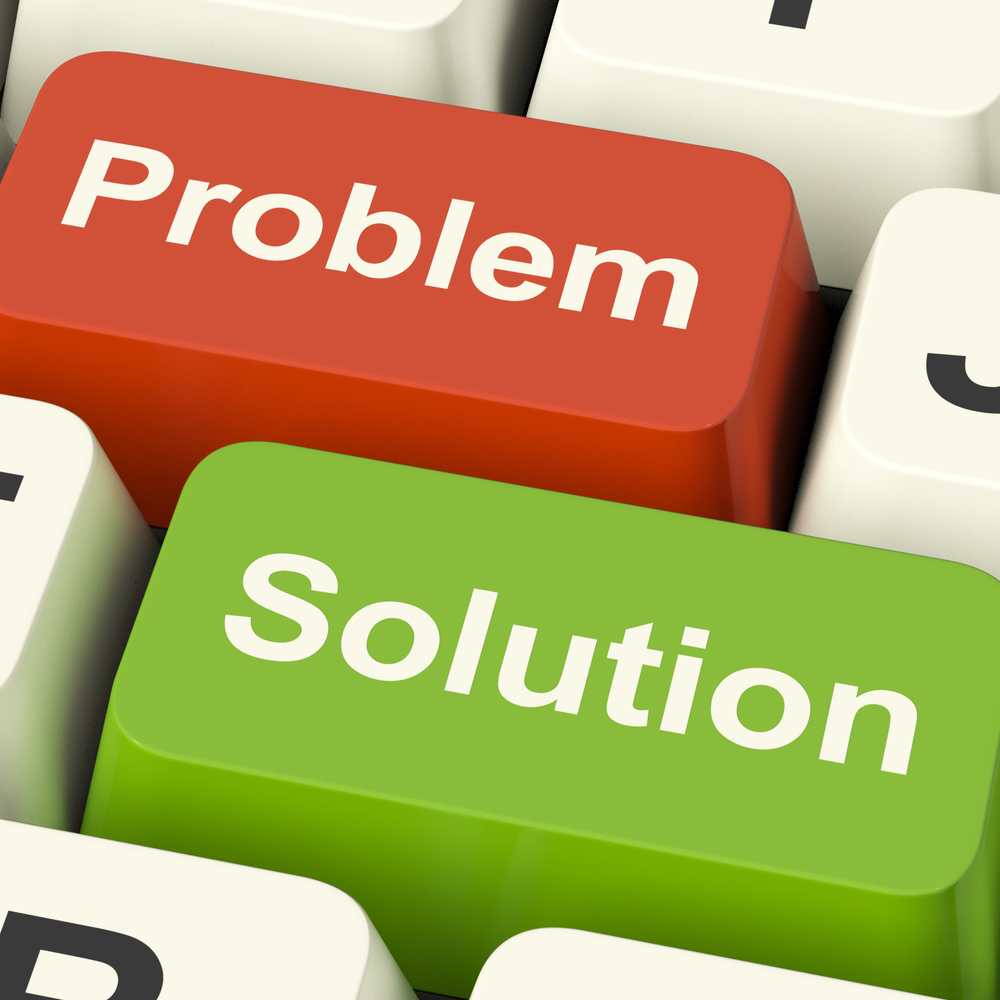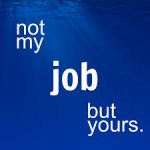 The prevailing view of patent experts who advise innovators--be they individuals or companies--it that patent filings should occur as early as possible. This advice, which is even more prevalent now that the US has moved to a "first to file" system, exacerbates the significant problem of worthless patents that I have written about previously. To summarize, by "worthless," I mean that the innovator's patents will not cover anything that consumers desire to buy. Logic thus dictates that patents will be irrelevant to the startup, as well as expensive wastes of time, unless protection aligns with a validated customer demand for the innovator's product or technology.
This is where a key difference falls out between the patent filing strategies for established companies and startups where each is developing innovative products or technology. The former already have products in the market and customers that
The prevailing view of patent experts who advise innovators--be they individuals or companies--it that patent filings should occur as early as possible. This advice, which is even more prevalent now that the US has moved to a "first to file" system, exacerbates the significant problem of worthless patents that I have written about previously. To summarize, by "worthless," I mean that the innovator's patents will not cover anything that consumers desire to buy. Logic thus dictates that patents will be irrelevant to the startup, as well as expensive wastes of time, unless protection aligns with a validated customer demand for the innovator's product or technology.
This is where a key difference falls out between the patent filing strategies for established companies and startups where each is developing innovative products or technology. The former already have products in the market and customers that
How Startup Patent Filing is Different
The Medical Device Patent Strategy Problem-Case Study
 An IP Strategist like myself spends considerable time "Monday Morning Quarterbacking" patent strategy for medical devices and other inventions for the purposes of valuation, commercialization and otherwise. In this regard, I am frequently asked to review medical device patents to provide my opinion regarding claim coverage in relation to commercialization potential. Most of these reviews indicate that the medical device patent fails to create a scope of protection sufficient to justify the investment needed to fully realize the value of a new market opportunity. Alternatively, I will provide a "freedom to operate" opinion to a competitor that wishes to enter the market with a non-infringing alternative but which nonetheless leverages the key insights that formed the basis of the patented medical device innovation.
An IP Strategist like myself spends considerable time "Monday Morning Quarterbacking" patent strategy for medical devices and other inventions for the purposes of valuation, commercialization and otherwise. In this regard, I am frequently asked to review medical device patents to provide my opinion regarding claim coverage in relation to commercialization potential. Most of these reviews indicate that the medical device patent fails to create a scope of protection sufficient to justify the investment needed to fully realize the value of a new market opportunity. Alternatively, I will provide a "freedom to operate" opinion to a competitor that wishes to enter the market with a non-infringing alternative but which nonetheless leverages the key insights that formed the basis of the patented medical device innovation.
To this end, a medical device investor recently engaged me to conduct a preliminary review of a
Patent Early? Maybe Not
Patent lawyers almost always instruct inventors to file for patent protection at the earliest possible date, but maybe this is not the best advice for many startups. To the contrary, I think this conventional advice is flawed--at least when it applies to inventions involving unproven products with no known customer base. Put simply, unless customers show that they care about the product that will be covered by the patent such that they are willing to pay more than it costs to make the product in volumes that will lead to sustainable profits, the patent will provide value only for the attorney who files it. Indeed, the absence of customers who wanted to buy the product is why very few of the patents that I have obtained for
Who Needs a Patent?
 My response to the question posed in the title of this post is typically: “the only person who needs a patent is a patent attorney.” Indeed, if a patent attorney fails to convince clients like you that they need to obtain a patent, she will quickly lose her livelihood. You should therefore be skeptical if a patent attorney recommends that you move forward with a patent without also advising you to first fully evaluate your business model, your go-to-market strategy and the competitive landscape and determining along with you how the available patent protection may allow you to realize your company's revenue and exit goals.
My response to the question posed in the title of this post is typically: “the only person who needs a patent is a patent attorney.” Indeed, if a patent attorney fails to convince clients like you that they need to obtain a patent, she will quickly lose her livelihood. You should therefore be skeptical if a patent attorney recommends that you move forward with a patent without also advising you to first fully evaluate your business model, your go-to-market strategy and the competitive landscape and determining along with you how the available patent protection may allow you to realize your company's revenue and exit goals.
This is not to say that patents are never the right thing or even often the right thing for entrepreneurs. To the contrary, examples abound for companies where patents served as a primary means of
Software Patent Apocalypse?
 The data coming out of the district courts and the USPTO make it fairly apparent that the "Software Patent Apocalypse" may be here, at least for the foreseeable future. This result has been widely predicted since the US Supreme Court decided Alice Corp. Pty. Ltd. v. CLS Bank International earlier in 2014, but facts now are coming out to demonstrate that the next few years will be tough for those who seek to obtain patent protection for inventions that fall into the realm of software.
The data coming out of the district courts and the USPTO make it fairly apparent that the "Software Patent Apocalypse" may be here, at least for the foreseeable future. This result has been widely predicted since the US Supreme Court decided Alice Corp. Pty. Ltd. v. CLS Bank International earlier in 2014, but facts now are coming out to demonstrate that the next few years will be tough for those who seek to obtain patent protection for inventions that fall into the realm of software.
We saw initial data from the district courts a couple of months ago when Timothy Lee of Vox.com presented data showing that a number of software patents had been found invalid as failing to claim patentable subject matter (a "Section 101 rejection" to us patent types) under the Alice rationale in
Strategic Patenting Part 2: It’s Not Your Patent Attorney’s Job to Get it Right
 From the last post, we see that it is very rare for patents to create value for their owners. Moreover, if the "big guys" with pockets deep enough to hire the best lawyers can get it right only 5% of the time, there should be no doubt that smaller companies and individuals should re-examine the advice they are getting from their IP counsel. This is not to say that smaller companies and individuals cannot be successful in creating market-defining patent protection. To the contrary, it is my strong belief that small companies can create solid patent protection at a reasonable cost, but to do so will likely require patentees to recognize that their IP counsel likely has no clue how to do what you need done. And, even if she does, it is not her job to make
From the last post, we see that it is very rare for patents to create value for their owners. Moreover, if the "big guys" with pockets deep enough to hire the best lawyers can get it right only 5% of the time, there should be no doubt that smaller companies and individuals should re-examine the advice they are getting from their IP counsel. This is not to say that smaller companies and individuals cannot be successful in creating market-defining patent protection. To the contrary, it is my strong belief that small companies can create solid patent protection at a reasonable cost, but to do so will likely require patentees to recognize that their IP counsel likely has no clue how to do what you need done. And, even if she does, it is not her job to make
Strategic Patenting Part 1: Why So Few Patents Create Real Value
 Many business people are surprised to find out that all patents are not created equal. A recent study of Fortune 500 companies reported in Suzanne Harrison's Edison in the Boardroom Revisited indicates that only a very small number of patents--namely, 5%-- obtained by these top patent filers created strategic value for their owners. If only 5% of the most sophisticated companies, all of which have veritable armies of patent professionals on their teams, can get patent protection right, it must follow that less resource-rich companies have an even lower probability of gaining strategically valuable patent protection. This and the next few blog posts will aim to help improve the odds for business people seeking to learn how to generate more valuable patents.
The first issue to clear up is what "strategic patenting" means. Those of us in the IP Strategy business define a "strategic patent"
Many business people are surprised to find out that all patents are not created equal. A recent study of Fortune 500 companies reported in Suzanne Harrison's Edison in the Boardroom Revisited indicates that only a very small number of patents--namely, 5%-- obtained by these top patent filers created strategic value for their owners. If only 5% of the most sophisticated companies, all of which have veritable armies of patent professionals on their teams, can get patent protection right, it must follow that less resource-rich companies have an even lower probability of gaining strategically valuable patent protection. This and the next few blog posts will aim to help improve the odds for business people seeking to learn how to generate more valuable patents.
The first issue to clear up is what "strategic patenting" means. Those of us in the IP Strategy business define a "strategic patent"
Do Startups Need Patents? Rigorous Study Presents Real Data on Startup Company Patenting Behavior
 As an IP Strategy advisor, I am often asked by the leadership of startup companies what the return on investment is from patenting. While I can confidently provide recommendations as an expert, my opinions are anecdotal based on my almost 20 years experience as an IP professional. Certainly, I have advised a number of startup companies over the years for which comprehensive patent coverage was critical to financial and market success. On the other hand, I have advised a much larger number of startup companies over the years where patenting made little difference to their fortunes.
The subjective nature of IP advice holds for other patent professionals. Our respective years of experience results in tacit knowledge that becomes "expertise." This expertise guides clients to us for advice and allows them to trust in our counsel. Missing from my knowledge
As an IP Strategy advisor, I am often asked by the leadership of startup companies what the return on investment is from patenting. While I can confidently provide recommendations as an expert, my opinions are anecdotal based on my almost 20 years experience as an IP professional. Certainly, I have advised a number of startup companies over the years for which comprehensive patent coverage was critical to financial and market success. On the other hand, I have advised a much larger number of startup companies over the years where patenting made little difference to their fortunes.
The subjective nature of IP advice holds for other patent professionals. Our respective years of experience results in tacit knowledge that becomes "expertise." This expertise guides clients to us for advice and allows them to trust in our counsel. Missing from my knowledge
Presentation: IP and Patent Strategy for Business Value Creation–The Good, The Bad and The Ugly
While postings have not been frequent in 2013, I have nonetheless been very busy with my IP Strategy counseling and speaking engagements. In 2014, I will commit to being much more diligent in updating my blog with relevant content for those seeking to use IP and intangible asset strategy to create and maximize business value. In the meantime, here is the deck from IP Strategy Overview I presented at a conference of innovators at Georgia Tech's College of Architecture in October 2013. The summary is below the presentation. (To view the Slideshare presentation you view the full post in IP Asset Maximizer Blog.) This deck includes the basic overview of IP (patents, copyrights, trademarks, trade secrets). However, this presentation goes beyond the usual lawyer-generated content to highlight not only the positive business aspects of IP, but also to give a reality check as to the likely ROI of investment in protection.
IP and Intangible Asset Strategy: The Easy to Deploy, Not-So-Secret Weapon for Capturing Business Value
IP and intangible asset strategies are a critical feature of ALL businesses regardless of size, product or customer. But why? Put simply, leaders need to be comfortable that their companies have the mechanisms in place to capture the value that you see possible from the venture. Without foresight and action, other businesses will be able to capitalize on the first/early mover's advantage. This happens often when a US company develops a new product, as well as the market for the product, and ex-US companies come in with a lower priced product to take the market away from the first mover. I have also seen customers (that is, big box or other consumer facing retailers) actually instigate the knock-offs: when the first mover demonstrates that a market exists for a product, the retailer will reach out to an Asian manufacturer to create a private label product with the same consumer benefits as that



